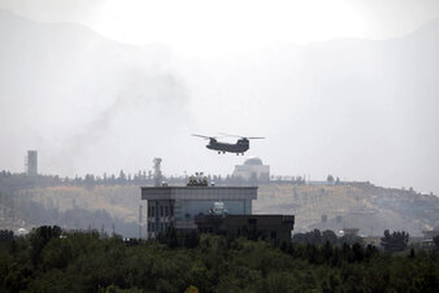I have always thought the Afghan war was doomed to fail just like Vietnam because of the deception and manipulation of the history of conflict in Afghanistan and the collusion of too many corrupt Afghan, Pakistani and American officials and the U.S. military-industrial complex involved in the deception of the American people and the world. Sarah Chayes lays it all out for us in this refreshingly honest opinion piece on her blog, and it is well worth the time to watch her interview on the PBS NewsHour on 20 AUG 21. The last part of this post is from the AP documenting the cost of this debacle, so tragic for so many families.....
Costs of the Afghanistan war, in lives and dollars
At just short of 20 years, the now-ending U.S. combat mission in Afghanistan was America’s longest war. Ordinary Americans tended to forget about it, and it received measurably less oversight from Congress than the Vietnam War did. But its death toll is in the many tens of thousands. And because the U.S. borrowed most of the money to pay for it, generations of Americans will be burdened by the cost of paying it off.
Here’s a look at the U.S.-led war in Afghanistan, by the numbers, as the Taliban in a lightning offensive take over much of the country before the United States’ Aug. 31 deadline for ending its combat role and as the U.S. speeds up American and Afghan evacuations.
Much of the data below is from Linda Bilmes of Harvard University’s Kennedy School and from the Brown University Costs of War project. Because the United States between 2003 and 2011 fought the Afghanistan and Iraq wars simultaneously, and many American troops served tours in both wars, some figures as noted cover both post-9/11 U.S. wars.
THE LONGEST WAR:
Percentage of U.S. population born since the 2001 attacks plotted by al-Qaida leaders who were sheltering in Afghanistan: Roughly one out of every four.
American service members killed in Afghanistan through April: 2,448.
U.S. contractors: 3,846.
Afghan national military and police: 66,000.
Other allied service members, including from other NATO member states: 1,144.
Afghan civilians: 47,245.
Taliban and other opposition fighters: 51,191.
Aid workers: 444.
Journalists: 72.
AFGHANISTAN AFTER NEARLY 20 YEARS OF U.S. OCCUPATION:
Percentage drop in infant mortality rate since U.S., Afghan and other allied forces overthrew the Taliban government, which had sought to restrict women and girls to the home: About 50.
Percentage of Afghan teenage girls able to read today: 37.
Date Congress authorized U.S. forces to go after culprits in Sept. 11, 2001, attacks: Sept. 18, 2001.
Number of times U.S. lawmakers have voted to declare war in Afghanistan: 0.
Number of times lawmakers on Senate Appropriations defense subcommittee addressed costs of Vietnam War, during that conflict: 42
Number of times lawmakers in same subcommittee have mentioned costs of Afghanistan and Iraq wars, through mid-summer 2021: 5.
Number of times lawmakers on Senate Finance Committee have mentioned costs of Afghanistan and Iraq wars since Sept. 11, 2001, through mid-summer 2021: 1.
PAYING FOR A WAR ON CREDIT, NOT IN CASH:
Amount President Harry Truman temporarily raised top tax rates to pay for Korean War: 92%.
Amount President Lyndon Johnson temporarily raised top tax rates to pay for Vietnam War: 77%.
Amount President George W. Bush cut tax rates for the wealthiest, rather than raise them, at outset of Afghanistan and Iraq wars: At least 8%.
Estimated amount of direct Afghanistan and Iraq war costs that the United States has debt-financed as of 2020: $2 trillion.
Estimated interest costs by 2050: Up to $6.5 trillion.
THE WARS END. THE COSTS DON’T:
Amount Bilmes estimates the United States has committed to pay in health care, disability, burial and other costs for roughly 4 million Afghanistan and Iraq veterans: more than $2 trillion.
Period those costs will peak: after 2048.



No comments:
Post a Comment